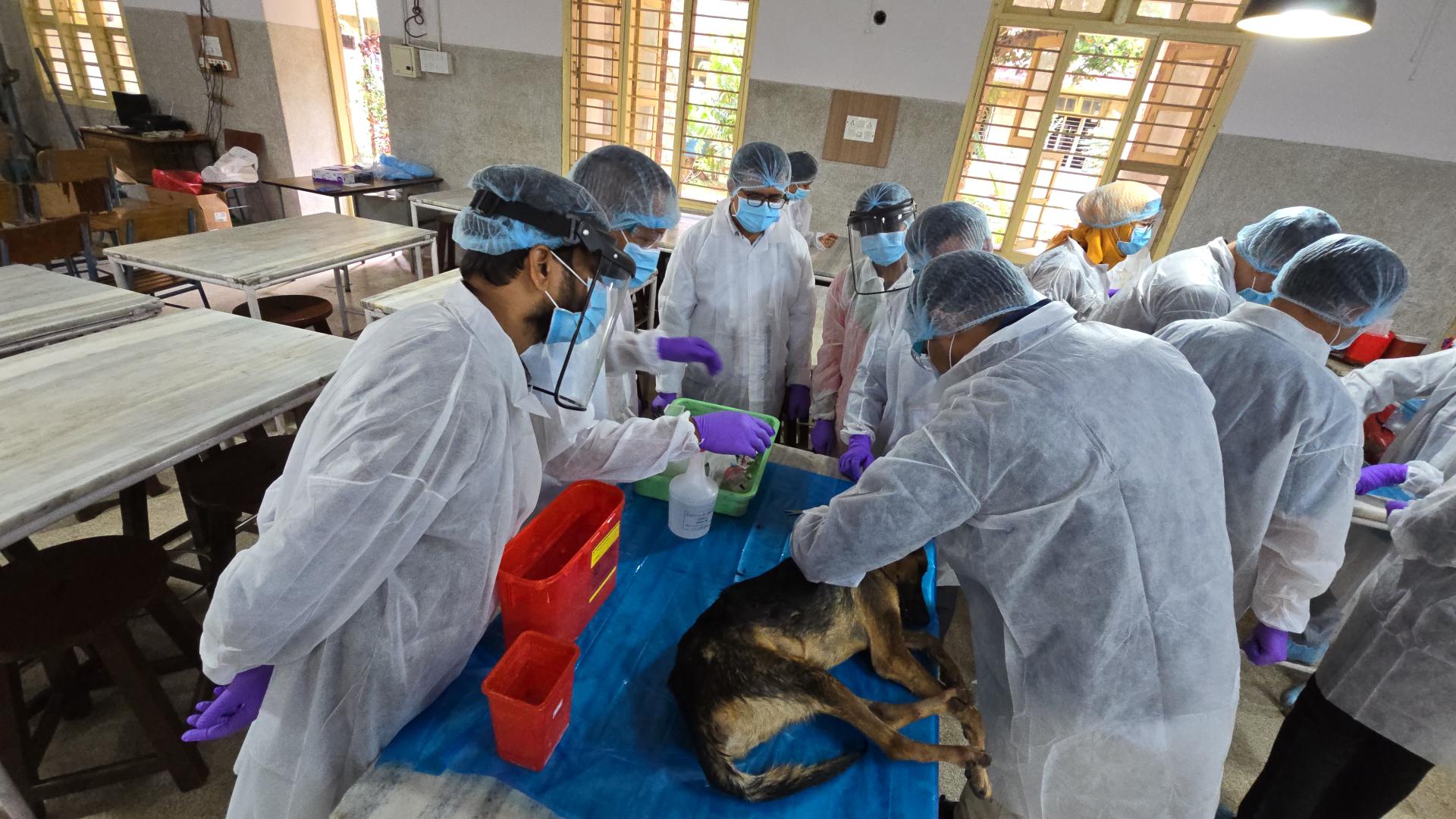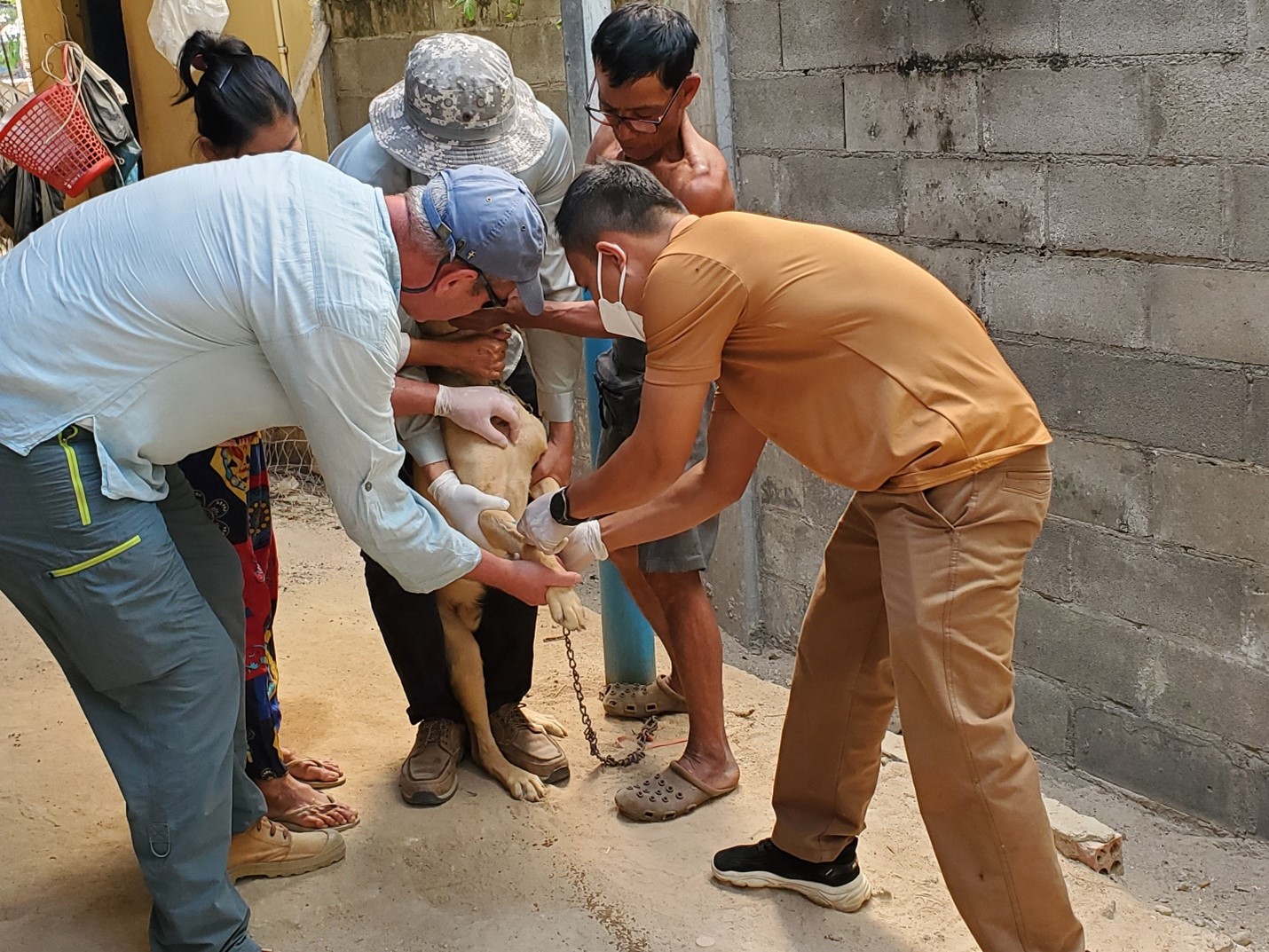
Rabies remains a significant public health concern in the South-East Asia Region. Despite being entirely preventable, rabies continues to pose serious threats to both human and animal health. Current surveillance data in both animals and humans is insufficient and often incompatible with the need to accurately describe the burden of disease. For instance, while estimates suggest over 27,000 annual human deaths in the Region, official reports for 2022 only accounted for 544 human cases across 8 countries and 799 animal rabies cases in 7 countries, as reported to WHO.
The lack of robust data limits the effectiveness of rabies elimination strategies. In humans, most cases are diagnosed solely based on clinical features and exposure history, if diagnosed at all. Often, rabies deaths are underreported and misdiagnosed as other common acute febrile diseases, such as cerebral malaria or viral meningitis. Detection rates are particularly low for atypical clinical manifestations or paralytic forms, as well as cases where animal exposures occurred weeks to months before disease onset and might not be linked.
Likewise, in animals too, most rabies cases go unnoticed/unreported owing to lack of rabies diagnostic capacity at the ground level.
A definitive, reliable diagnosis of rabies can only be made by appropriate laboratory methods. However, laboratory diagnosis of human and animal rabies cases is difficult as samples are often not available (lack of awareness for sample testing requirements, lack of competence for selecting optimal samples, lack of appropriate sampling capacity, difficulties in getting samples post-mortem due to sociocultural reasons, incomplete data provided), or laboratory capacity is missing.
(Bengaluru, India) Participants having hands-on practice on WOAH-recommended occipital foramen approach brain sampling.
Accurate laboratory diagnosis is crucial for assessing disease burden, in evaluating rabies programmes, in monitoring progress towards the global goal of “Zero by 30”, and is a fundamental pillar for Integrated Bite Case Management (IBCM) strategies. IBCM connects animal and human health sectors allowing for joint risk assessment of patients and suspect animals to make informed Post-Exposure-Prophylaxis (PEP) decisions and trigger appropriate rapid response actions. This advanced surveillance method not only reduces human and animal rabies deaths but also maximizes resources and is a prime example for implementing One Health.
The need for increased laboratory capacity was also expressed at the latest meeting of Programme Managers and the Regional Technical Advisory Group (RTAG) on dog-mediated human rabies in South-East Asia Region in March 2023 in Bangkok and in animal rabies workshops/trainings conducted by the World Organisation for Animal Health (WOAH). It was further reiterated at the Asia Pacific Rabies meeting organized by the Regional Tripartite in July 2024 in Bangkok.
...for assessing disease burden, in evaluating rabies programmes, and in monitoring progress towards the global goal of “Zero by 30”.
WHO SEARO and WOAH have been collaborating on various rabies related activities in the region. Thus, in response to the needs of its members, a 5-day joint training workshop was organized to strengthen laboratory capacity for rabies diagnosis in animals and humans. The training provided theoretical and practical guidance as well as hands-on training on different ante- and post-mortem rabies diagnosis and minimally invasive sample collection methods, targeting young/mid-level professionals from both human and animal sectors.
A total of 15 participants, including one country representative each from animal (AH) and human health (HH) sectors of Bangladesh, Bhutan, India (animal health only), Indonesia, Malaysia (two HH participant), Nepal, Sri Lanka, and Timor-Leste (human health only) attended the training. Experts from WOAH Reference Laboratory for Rabies in India at the Karnataka Veterinary Animal and Fishery Sciences University (KVAFSU) and the WHO Collaborating Centre at the National Institute for Mental Health and Neurosciences (NIMHANS) at Bengaluru provided the hands-on training.
Dates: 21- 25 Oct 2024
Location: Bengaluru, India
Participation: By invitation
Banner photo: (Bengaluru, India) Participants having hands-on training on direct fluorescent antibody and direct immunohistochemistry tests.




